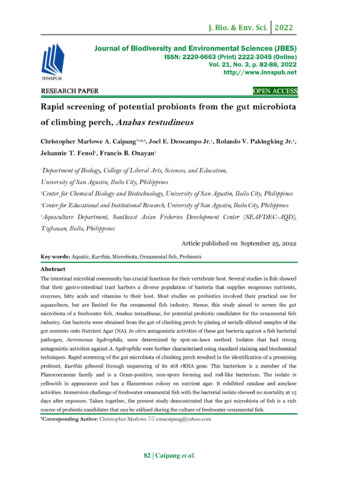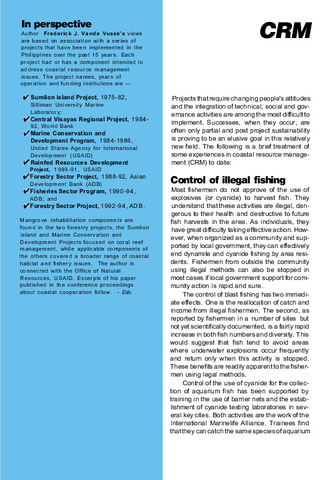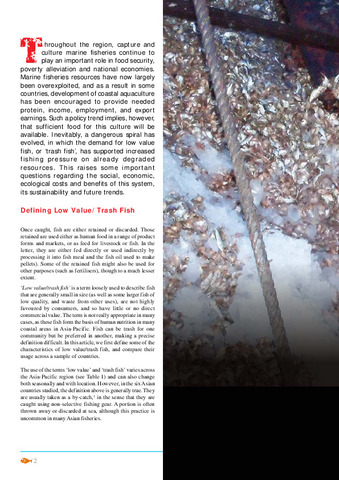Rapid screening of potential probionts from the gut microbiota of climbing perch, Anabas testudineus

Associated URL
www.innspub.netកាលបរិច្ឆេទ
2022-09-25អ្នកនិពន្ធ
Page views
138ទិន្នន័យមេតា
មើលកំណត់ត្រាលម្អិតនៃធាតុ
Share
អរូបី
The intestinal microbial community has crucial functions for their vertebrate host. Several studies in fish showed that their gastro-intestinal tract harbors a diverse population of bacteria that supplies exogenous nutrients, enzymes, fatty acids and vitamins to their host. Most studies on probiotics involved their practical use for aquaculture, but are limited for the ornamental fish industry. Hence, this study aimed to screen the gut microbiota of a freshwater fish, Anabas testudineus, for potential probiotic candidates for the ornamental fish industry. Gut bacteria were obtained from the gut of climbing perch by plating of serially-diluted samples of the gut contents onto Nutrient Agar (NA). In vitro antagonistic activities of these gut bacteria against a fish bacterial pathogen, Aeromonas hydrophila, were determined by spot-on-lawn method. Isolates that had strong antagonistic activities against A. hydrophila were further characterized using standard staining and biochemical techniques. Rapid screening of the gut microbiota of climbing perch resulted in the identification of a promising probiont, Kurthia gibsonii through sequencing of its 16S rRNA gene. This bacterium is a member of the Planococcaceae family and is a Gram-positive, non-spore forming and rod-like bacterium. The isolate is yellowish in appearance and has a filamentous colony on nutrient agar. It exhibited catalase and amylase activities. Immersion challenge of freshwater ornamental fish with the bacterial isolate showed no mortality at 15 days after exposure. Taken together, the present study demonstrated that the gut microbiota of fish is a rich source of probiotic candidates that can be utilized during the culture of freshwater ornamental fish.
Keywords
Aquatic Kurthia Microbiota Ornamental fish ProbiontsSuggested Citation
Caipang, C. M., Deocampo, J. E., Jr., Pakingking, R. V., Jr., Fenol, J. T., & Onayan, F. B. (2022). Rapid screening of potential probionts from the gut microbiota of climbing perch, Anabas testudineus. Journal of Biodiversity and Environmental Sciences , 21(3), 82-88. http://hdl.handle.net/10862/6408
ប្រធានបទ
Taxonomic term
បណ្តុំបណ្តុំ
- AQD Journal Articles [1215]
Related items
Showing items related by title, author, creator and subject.
-
'No' to cyanide fishing!
Dagoon, N. J. (Aquaculture Department, Southeast Asian Fisheries Development Center, 1999) -
CRM in the Philippines: Lessons learned
Southeast Asian Fisheries Development Center, Aquaculture Department (Aquaculture Department, Southeast Asian Fisheries Development Center, 1996)Philippine coastal communities can become capable fishery resource managers and that their management practices can become largely self-sustaining if the project approach focuses on assisting fishermen to learn how to help ... -
Prized commodity: Low value/trash fish from marine fisheries in the Asia-pacific region
Staples, Derek; Funge-Smith, Simon (Secretariat, Southeast Asian Fisheries Development Center, 2005)The use of the terms 'low value' and 'trash fish' varies across the Asia-Pacific region and can also change both seasonally and with location. This article defines low value/trash fish as 'Fish that have a low commercial ...





